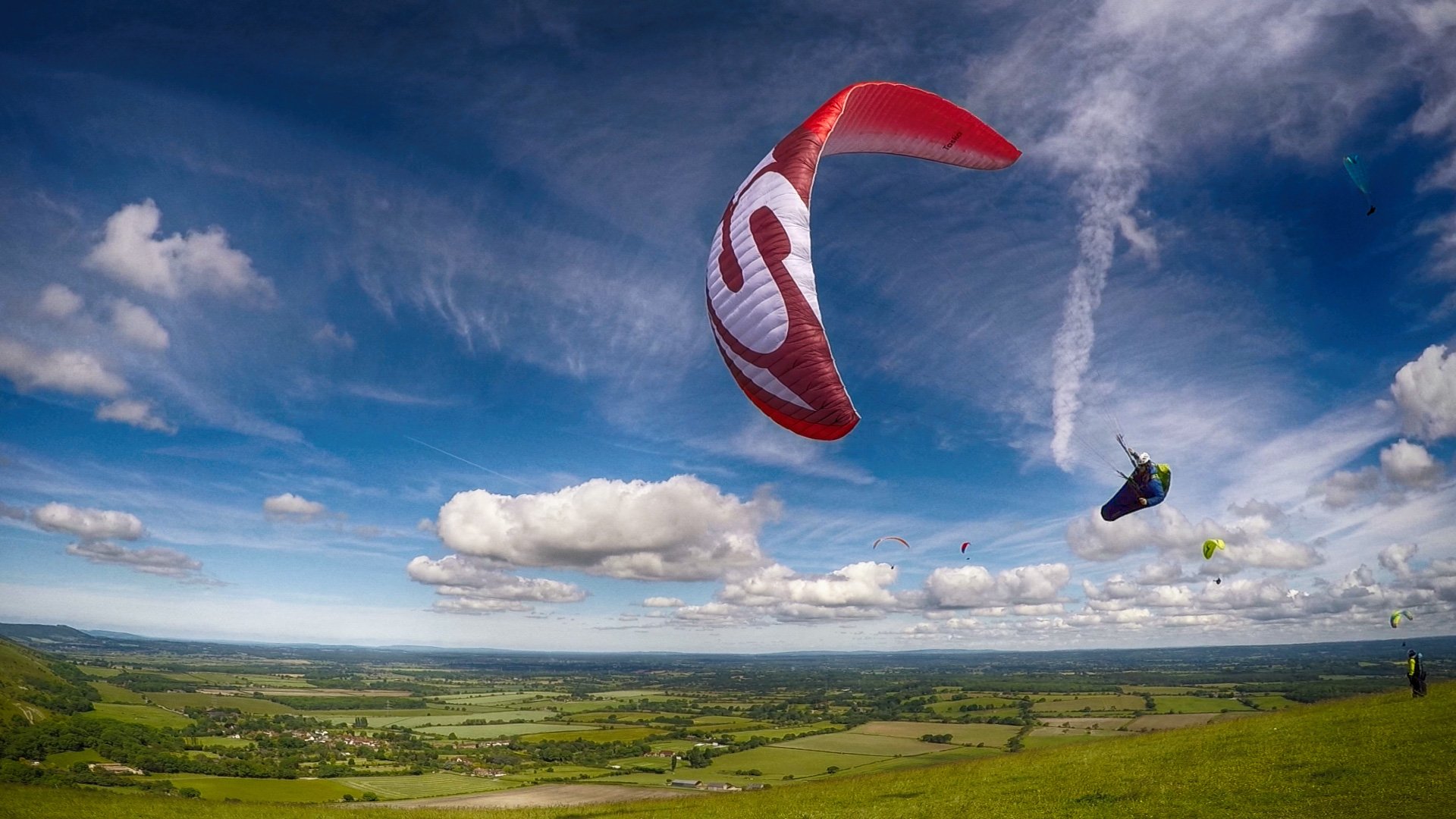
The TASKA is Supair's first foray into the Sports Class. Supair has slowly been growing their wing range, from the ground up, with the EONA (EN A), tandem SORA, EIKO, LEAF and LEAF-LIGHT (all EN B), and now the TASKA (EN C). Aimed to deliver 'accessible performance' it is a semi-light construction, avoiding the compromises of extreme lightweight product while still being compact and easy to carry at only 4.5kg in the medium size.

Carlo has flown the TASKA M (90-105kg) for several hours on different days in a variety of conditions, at flying weights varying from 92-100kg all-up*, and also ground handled and flown the TASKA S at 90kg all-up for a short while so far. He commented: "The build quality is excellent, and the wing looks very clean, sleek and rather sexy! The risers are nice to handle, easy to manage on the ground, and I like the split A-risers, for launching and inducing big ears in-flight. I also like the C-balls (balls in the C risers for rear riser control when using the speed system), both on the ground and in the air, and personally prefer this solution to handles or sticks, as they are cleaner, neater and have less tendency to get in the way or catch on things."
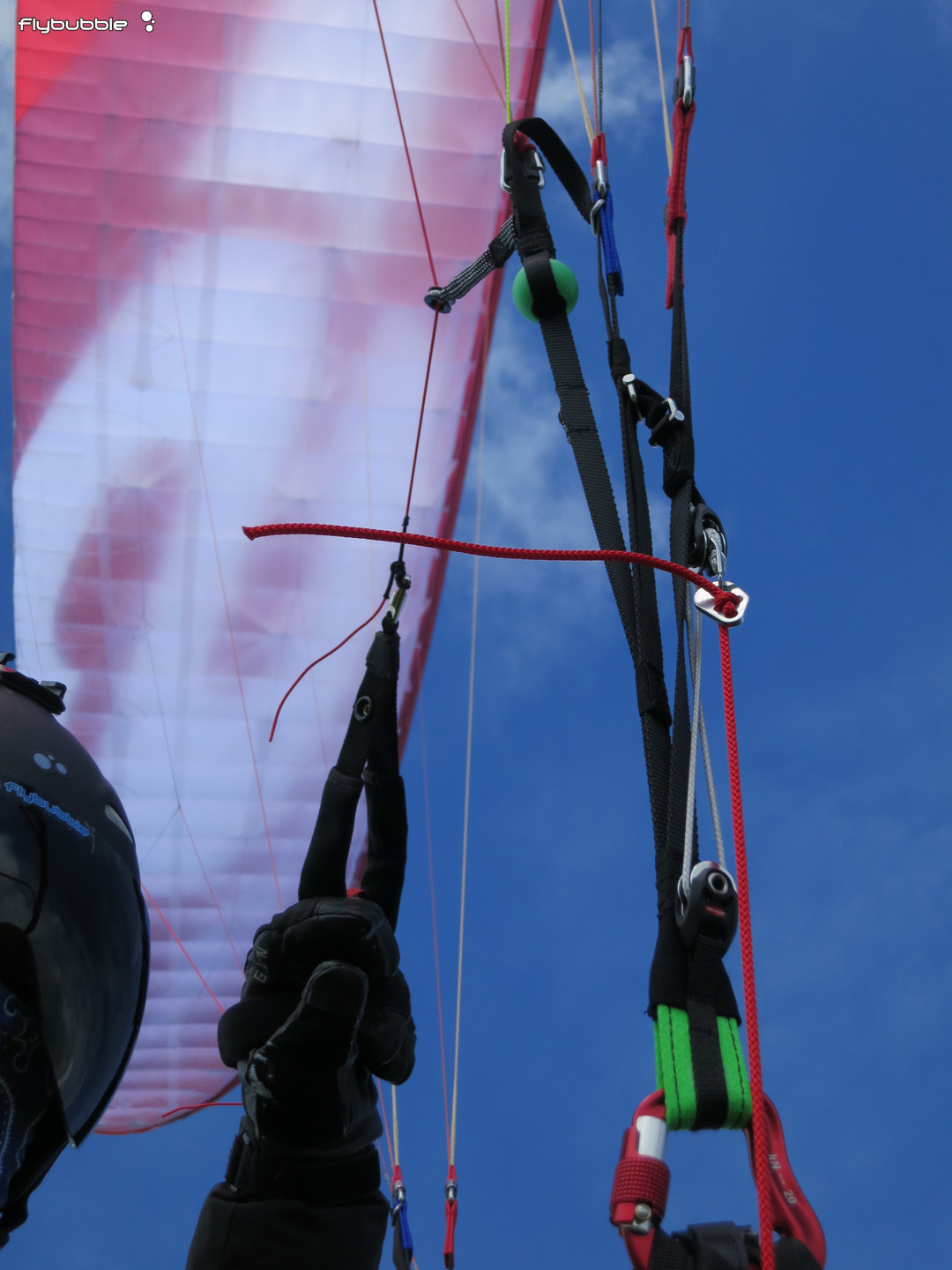
One of Carlo's flights on the TASKA M was a very enjoyable 4.5 hour XC flight from Devils Dyke to Ramsgate (122km) in good XC conditions loaded at 98 kg all-up, during which he got to know the wing well. "The Taska's handling is absolutely lovely," he said. "It has lighter brake pressure than Skywalk's CAYENNE5, less physical to turn, with a nice precise feeling. The brake travel is shorter than the CAYENNE5, and the stall point less physical, so a less heavy-handed approach is required. This should present no problems for the kind of pilot that should be flying this level of wing (high C), most of whom might well prefer the shorter brake travel and lower effort required - which I found also allows for more finesse, less force.
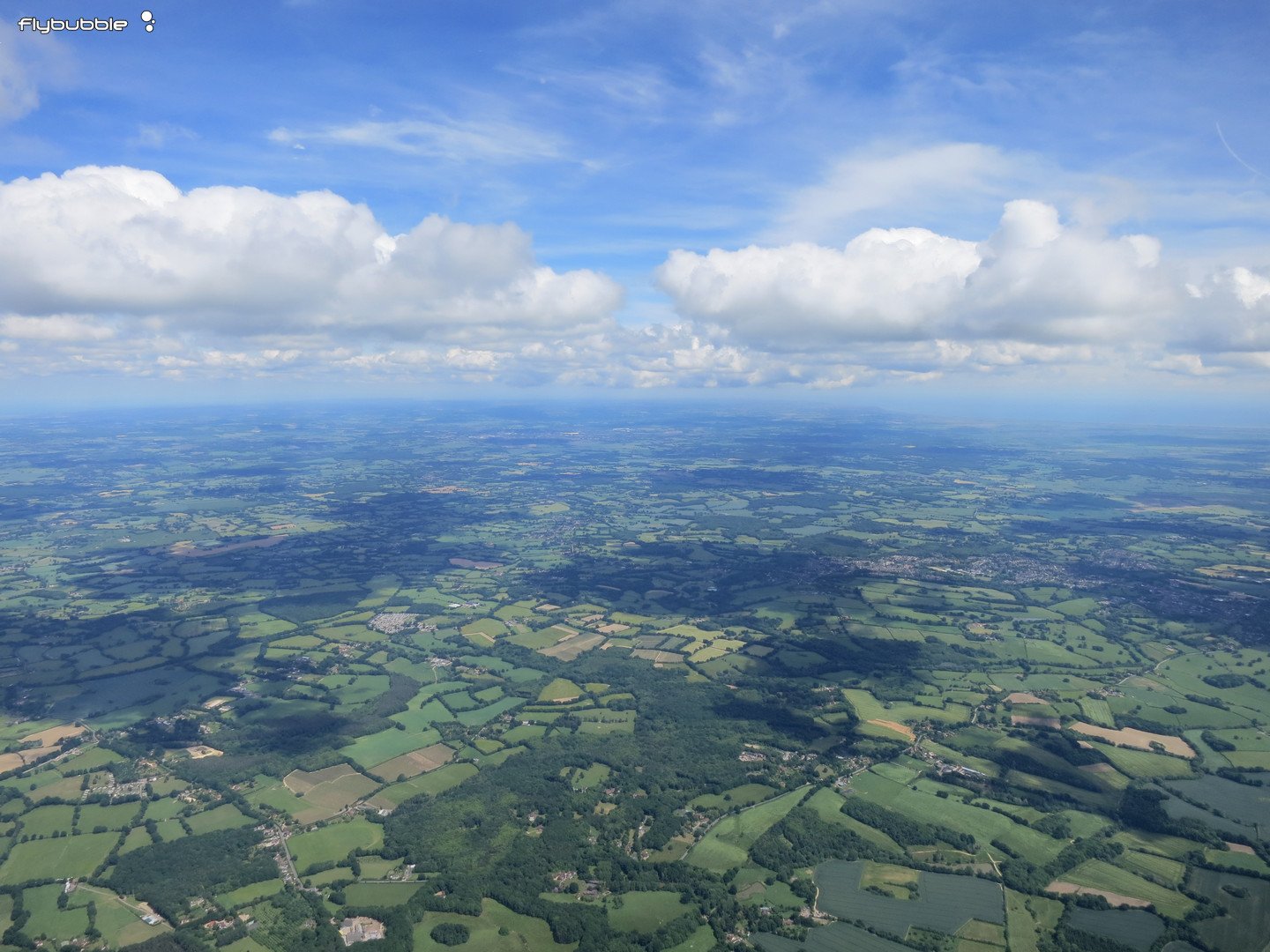
The Taska feels surprisingly cohesive for a wing with an aspect ratio of 6.35; it doesn't twist and move about as much as some other wings with similar aspect ratios. The pilot demands are lower than other high Cs I've flown (e.g. in ascending order of pilot demand: Skywalk CAYENNE5, Nova Triton 2, BGD Cure), especially in terms of pitch control and preventing collapses, but still with excellent performance. The speed system is light and effective, and the Taska is one of the most solid on full bar, feeling fast yet very secure. It's also nicely pitch stable, and does not require lots of active input to fly, it doesn't pitch around unnecessarily when I don’t want it to. This makes it more comfortable and less tiring to fly in more active air.

With the Taska I’m finding I don’t need to use so much inside brake to circle; I can use the outside brake to keep it level, and when I let the outside up I get a useful acceleration to get the grab and turn I need as it gains more speed and energy. In all thermals including weak broken stuff and strong punchy cores the climb rate is very impressive; it goes up really well! (I had some close-up comparisons against good pilots on advanced wings e.g. Ozone Zeno and R11).
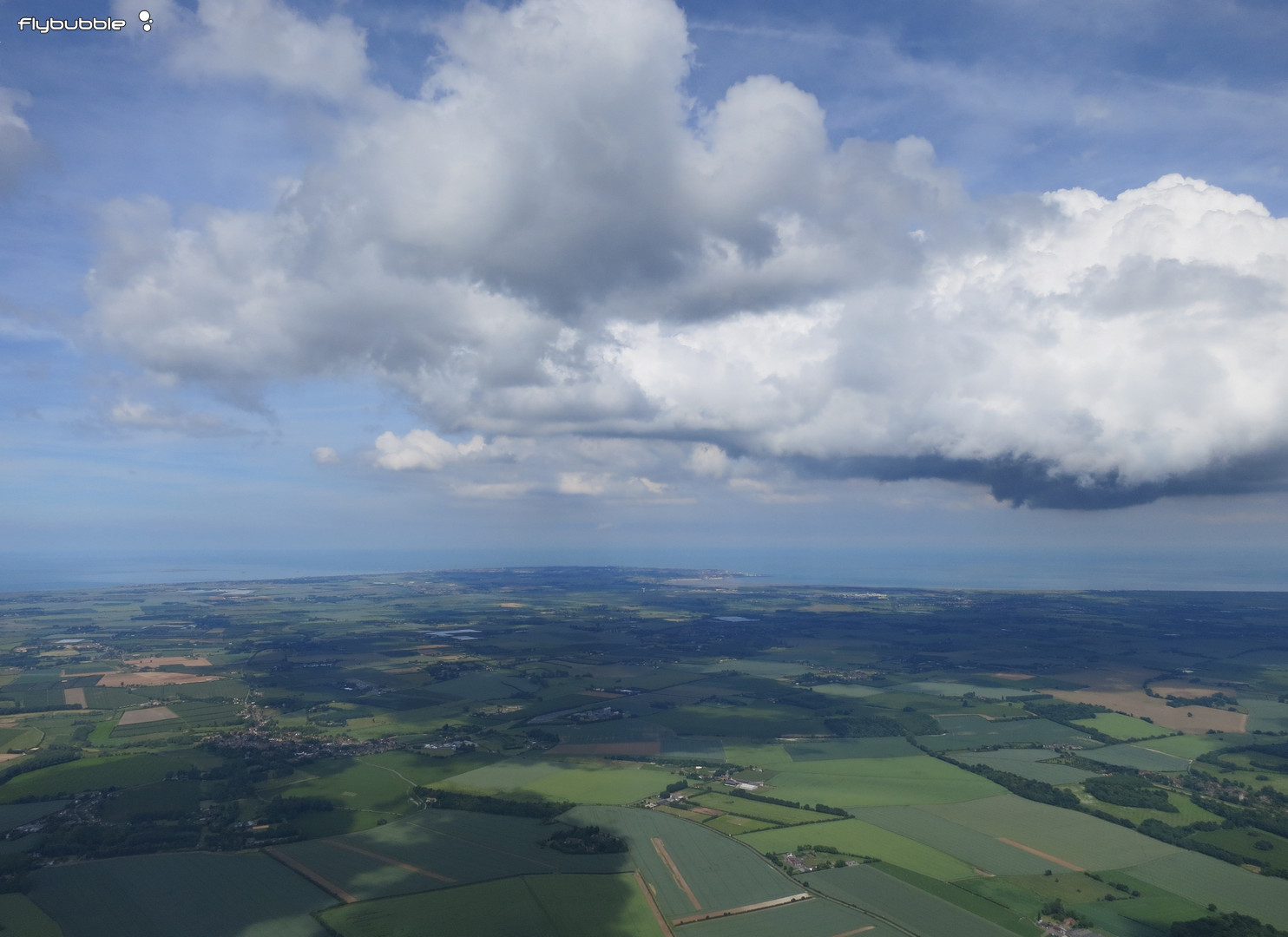
Comparing the glide angle of wings in active air generally gives misleading impressions, however, from what I could tell, the Taska seems to be very competitive. It is also stable yet effective on big ears, accelerated or not, which I find particularly useful for long transitions under cloud or airspace."
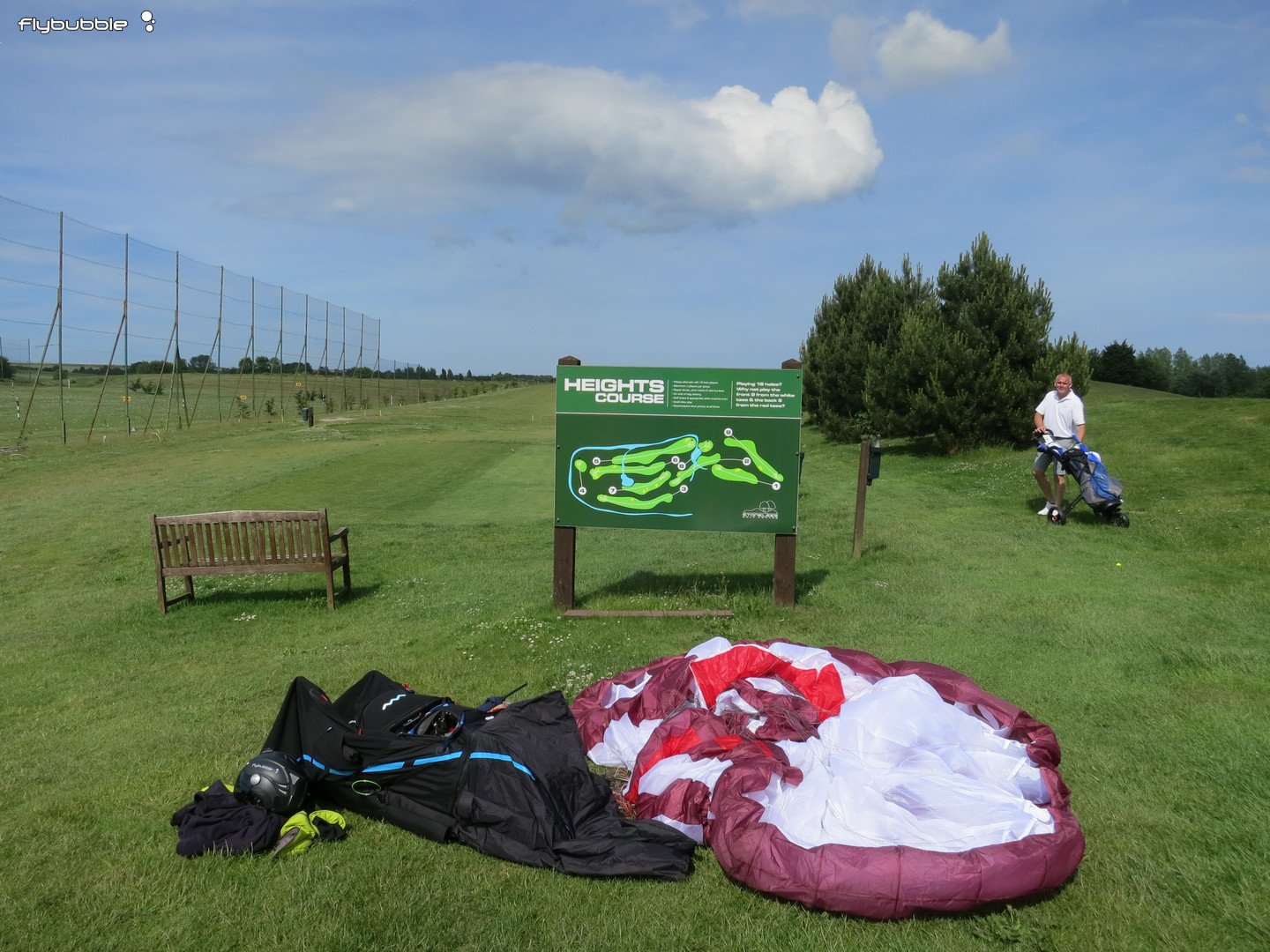
"Overall the Taska is a competitive modern high C wing, with lovely handling, well-balanced feedback, excellent climb and relatively low pilot demands. I'm very impressed! Pilots looking for a top performing EN C wing should definitely have the Taska on their list to wings to try and buy."
Find out more about the Supair TASKA
* In order to get a fuller picture of how a glider behaves, and be able to better advise pilots on which model and size is likely to suit their personal requirements best, we always try to fly gliders in different places of their certified or recommended all-up weight range. Some pilots like to fly heavier-loaded, whilst others prefer to be lighter-loaded. It's not necessarily that one is right and the other is wrong. It's often just a case of different strokes for different folks! Also, the conditions on the day may suit heavier or lighter loading better.
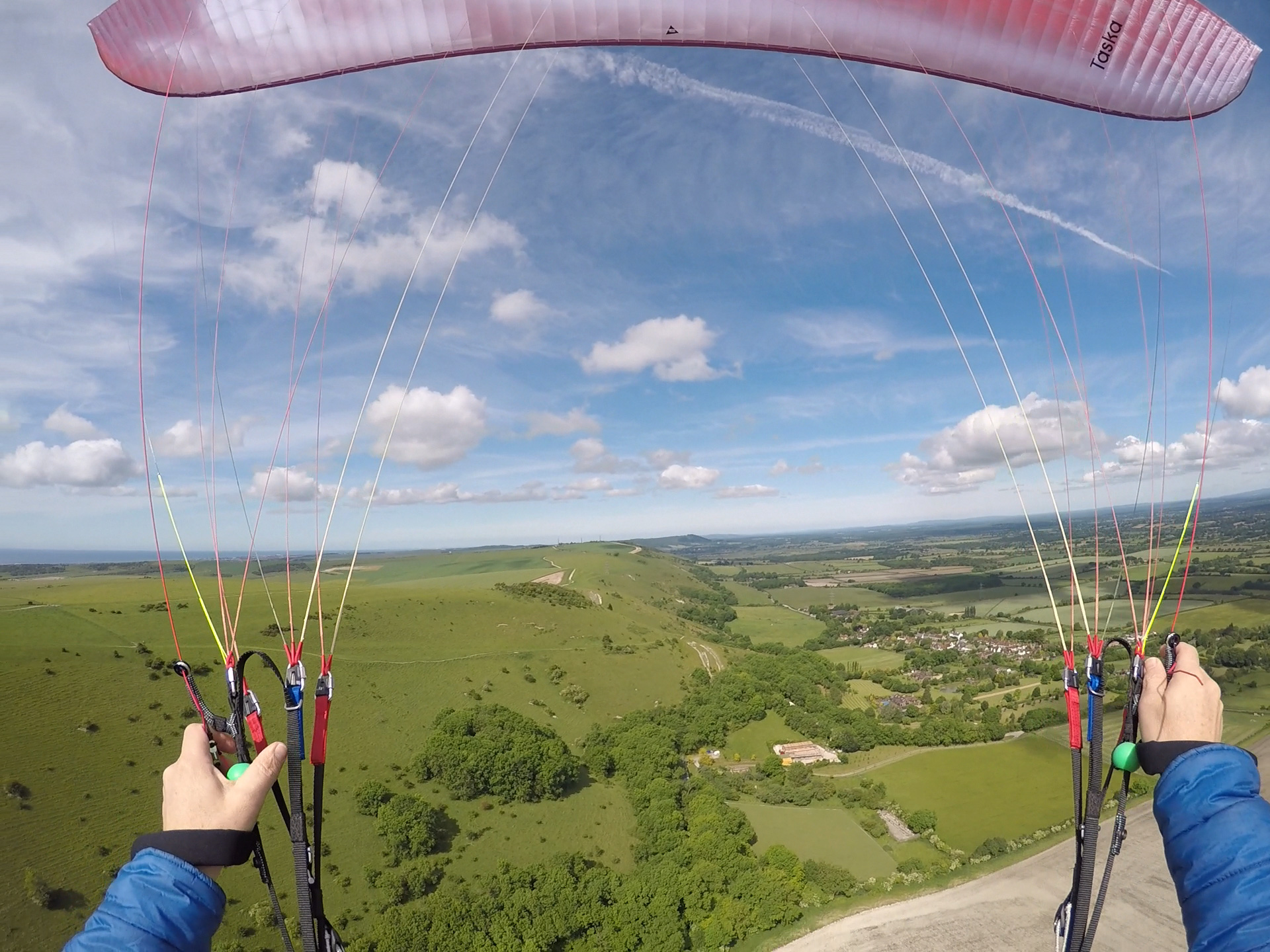
Greg flew the TASKA S (80-95kg) at 93kg for two hours in 1-3m/s thermals. "The strong points for me are the calm nature in the air, and restricted pitch. On glide and on bar, you don't need to catch pitches much, if at all. It's very cohesive and flies as one unit, there's very little bend/flex in the wing."
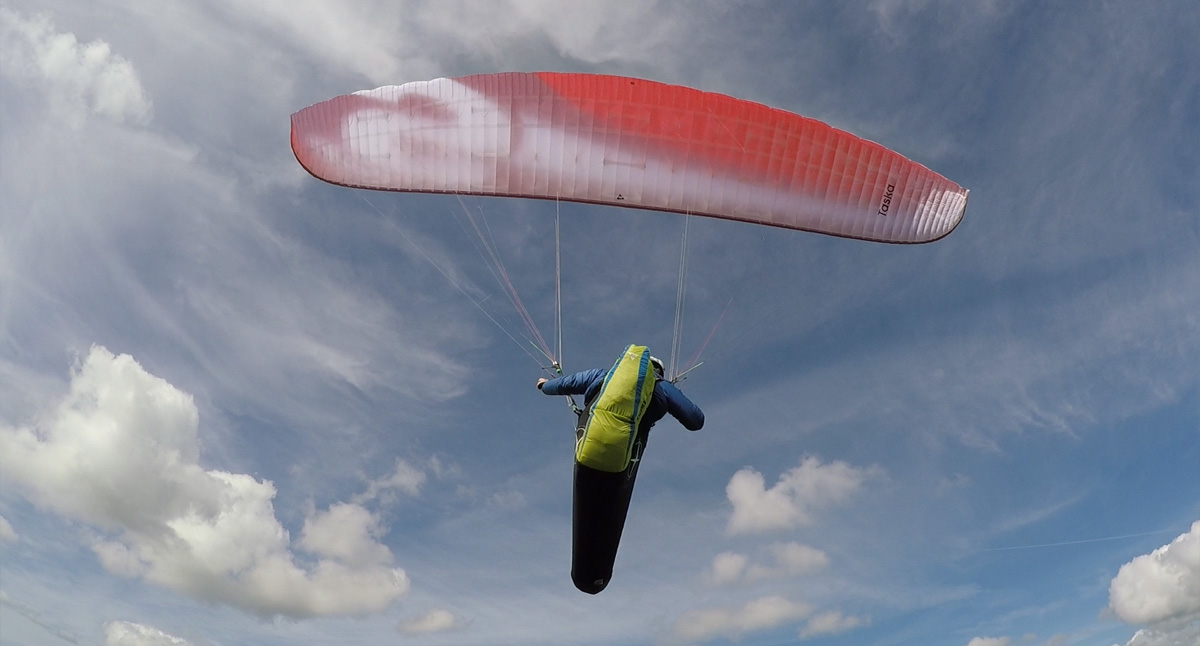
Stability is good, roll and pitch inputs dampen out fast, collapse resistance feels good, collapse recovery is positive with very little turn on large asymmetrics, and very positive reinflation from frontals. Big ears are clean, stable, and reinflate on their own. Turns are achieved with moderate pressure at short travel, but I found a tendency for the wing to accelerate into a spiral turn requiring use of the outside brake to hold it flat, so you can't hook a tight turn by using lots of inside brake, you need to use good timing and finesse.
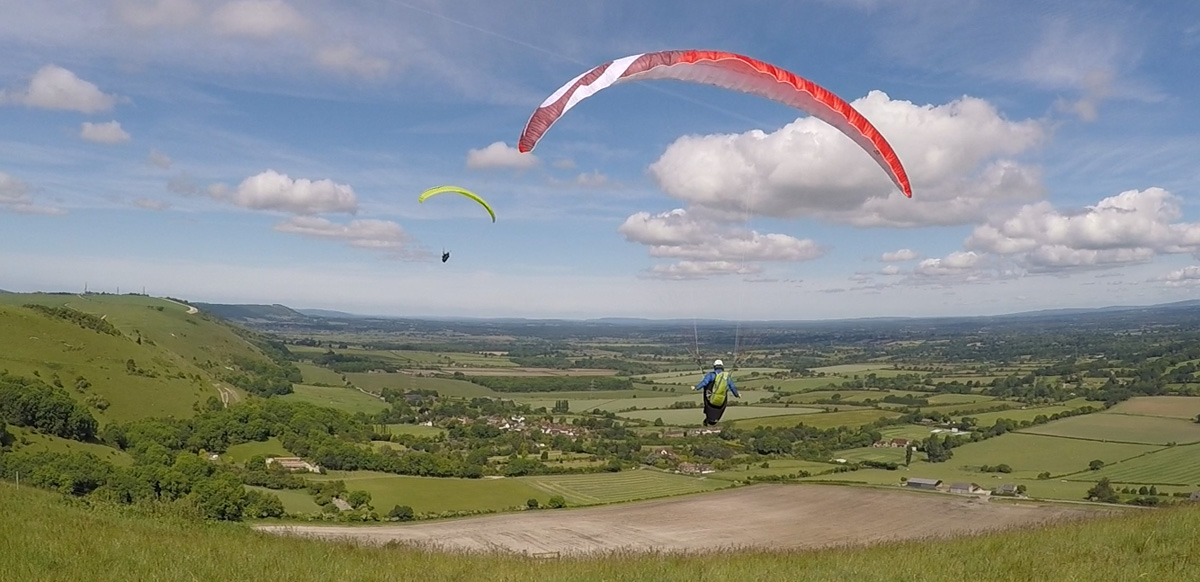
It is possible to find the spin point on turns and slow flying/toplanding, and care needs to be taken that the Sports Class rating is respected there.
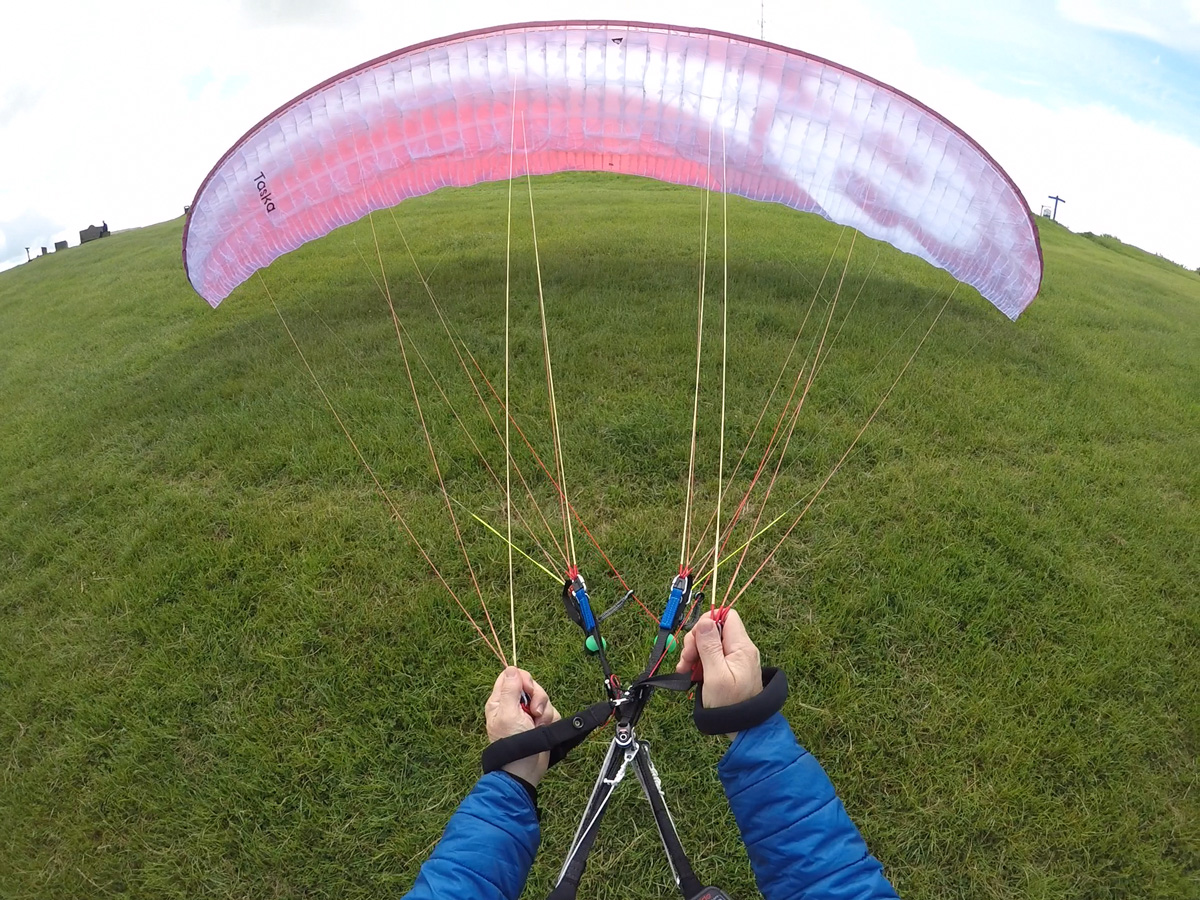
Groundhandling was slightly challenging in that it rises slowly (nice for strong wind) but it can be easily 'pulled down' by brake input, and with short brakes to start with, some pilots with rough edges on their launching skills might struggle a little.

The risers have the floating system for the Bs which enhances rear riser steering, however I would mention that this is designed to be used only when accelerated, otherwise the C risers create a deep crease in the chord. Fully accelerated, moderate rear riser controls were effective and comfortable. The wing was solid at full bar except for occasional tip curls.

Overall, I was impressed with the quality of construction, choice of line materials, and finish on the wing. Stability and security felt good."

